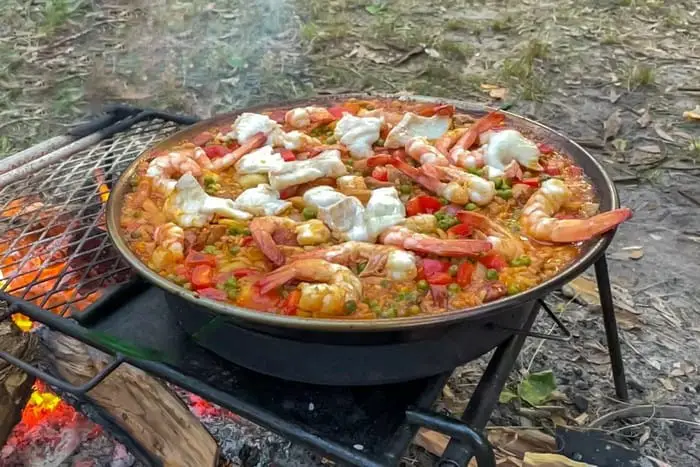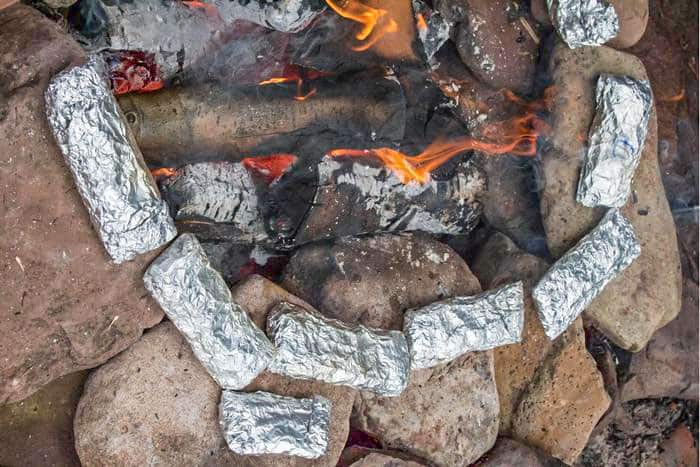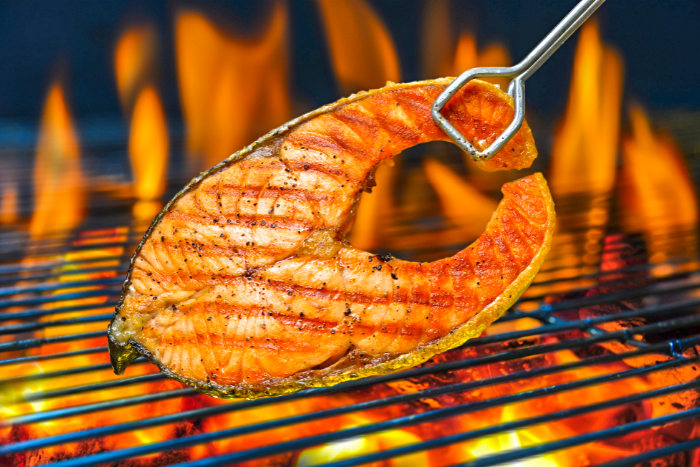
Before we start our recipe and instructions for our Easy Campfire 20 Minute Seafood Paella Recipe lets take a look at the history and what the dish means to the people of Spain. Until you actually visit their country and dine at a seaside table you will never truly appreciate what a presentation they make of each pan.
Paella’s Beginnings
Although paella is often regarded as one of Spain’s most iconic meals, it actually hails from the Valencian region on the nation’s eastern coast. Irrigation methods, which were first built by the Romans, evolved over time, and rice became a mainstay in the cuisine of the region by the 15th century. Paella as it is today is thought to have originated from open-air feasts prepared near Valencia’s Lake Albufera, with water vole as one of the major ingredients.
Valencians began to add additional types of meats to their rice meals as their dining habits grew and became slightly more complex, such as rabbit, chicken, or duck, as well as butter beans, paprika, and saffron. Despite the fact that this largely meat-based dish is regarded the classic Valencian paella, due to the region’s proximity to the Mediterranean, a sea variety quickly arose as the dish’s popularity grew. Originally, seafood paella was prepared with the shellfish in its shell, but a more opulent variant, the paella del senyoret, requires the seafood to be removed from its shell before serving.
Cooking over an open fire is one of the best features of travelling. The Campfire Seafood Paella dish is a popular camping supper. I had no notion what Paella was when I first learned of it. Our next-door friend had asked us to a Paella party, and my initial reaction was, “What?” I asked her to explain it to me, and she answered, “Put us in.” While one member supervised the preparation, the others sat back and watched, each with an alcoholic beverage in hand.
check out our video
Dining on Paella
Following hours of meticulous preparations, the meal arrives as a much-anticipated treat. The level of the rice-based preparations in the pan is one hallmark of a great paella: Valencians believe that would be no more than ‘un ditet,’ or ‘a tiny finger.’ The rationale for this is that because the stock actually runs to the bottom of the pan, the rice grain closest to the pan bottom have more taste.
When properly cooked, the bottom layer of rice in a paella is the most prized portion of the meal, and it has its own title: socarrat. To earn that term, the rice must be somewhat crispy, which is accomplished by increasing the heat beneath the pan during the latter phases of cooking until the dish emits a slightly roasted aroma and the rice begins to crackle. Do not even make the silly mistake of dismissing this as ‘scorched rice,’ as your more seasoned eating companions would like you to believe.
Finally, if there’s one thing to remember about paella, it’s that it’s a dish made for socializing and bringing people around, from the moment it’s prepared to the moment it’s eaten and for your vacation this campfire paella And that moment, when everyone gathers around the table with nothing but a smile and a spoon, is probably the most crucial aspect of a fantastic paella.
Paella Preparation
The ‘paella’ or pan, which is normally large (sometimes enormous), spherical, and thin-based, is one of the most significant components in the creation of the dish. Paella dishes are now available in a variety of materials and shapes to meet the needs of modern kitchens. Early paella pans, as well as more classic paella dishes today, had a somewhat convex bottom rather than a flat bottom, which is said to aid in the creation of one of the dish’s first stages: the sofregit, or sofrito in Spanish (see below). Because paella was originally cooked over an open fire, the issue of heat distribution on a convex pan would not have been an issue in the same way that it is now with induction and electric hobs.
Paella is a Valencian dish that originated in Spain. Paella is the Spanish word for “fried pan,” referring to the large, shallow traditional pan used to cook the meal over an open fire. It was also the first time I’d ever seen a pan like this. There are other variations, but we went with the mixed version, which included Scallops, Mussels, and Shrimp. It was designed with farmers and farm laborers in mind.
Have you ever attempted to make campfire paella over an open flame? What could be more enjoyable than gathered around a fire, inhaling the tantalizing aroma of dinner, and then all eating from the same dish of campfire paella? Although it appears to be ostentatious, we assure you that you can learn to cook this traditional campfire paella cuisine at home. Laurel and I have a long history of learning how to make paella, dating back to our first trip to Barcelonetta, Spain a 10 years ago. All of those memories inspired this dish. Our years of research paid off when a Spaniard friend gave this recipe two thumbs up after tasting it. Continue reading to learn more about the story and how to create this seafood paella over an open fire!
Everyone says don’t your mean Barcelona and no we don’t. The town of Barcelonetta is a sleepy little town that is part of Barcelona. Before anyone knew the word Barcelona the town of Barcelonetta was a little fishing village that eventually spawned todays city. It is still there, cheaper, quieter and truly quaint. The best beaches and for us the best paella Spain had to offer was in this town.
We’d seen pictures and knew it would be our first dinner after stepping off the airport. We didn’t know much about Spanish cuisine at the time, but we could tell paella was something exceptional. Paella is a traditional Spanish meal that originated in Valencia and is now popular throughout the world. As an American, I’m pleased to see that more and more people in my nation are discovering the pleasures of paella.
Ingredients
1 pound seafood, (scallops, mussels, clams, shrimp, prawns, or a mix)
15 cherry tomatoes
1 ½ cup broth
Big pinch of saffron
1 medium onion, , minced
3 tablespoons olive oil
2 teaspoons salt
½ teaspoon red pepper flakes
1 cup short grained rice, , Bomba is traditional if you can find it; we used Calrose
4 cloves garlic, , minced
½ teaspoon paprika
½ cup Kenwood Vineyards Sauvignon Blanc
Preparation
Scrub the mussels and clams, debeard mussels, and devein the shrimp or prawns if they aren’t already deveined. While you prepare the rest of the ingredients, soak the mussels and clams in a large dish of cold water.
Start your campfire; you won’t need to burn the wood down to embers because you’ll be cooking over the flames at high heat. Preheat your cast iron skillet on the grill. Optional second step: Skewer the cherry tomatoes and roast them over an open flame on the grill. This adds a lovely smoky taste to the paella and helps to draw out some of the tomatoes’ sweetness.
1 12 cup broth, measured in a cup or small bowl Stir in the saffron to the broth. Remove from the equation. The onion should be diced, and the garlic should be minced.
Once the fire is going and the skillet is hot, add the olive oil, diced onion, salt, and red pepper flakes to the skillet. Cook for about 2 minutes, or until the onion starts to soften.
In the same skillet, add the rice and the minced garlic. Toast the rice for 2-3 minutes, tossing often, or until it turns golden (but not browned). Add the wine and stir for 3 minutes, or until the rice has absorbed it.
Stir in the paprika for a few seconds to coat the rice, then add the broth, saffron, and roasted tomatoes. Allow it to sit for a few minutes after giving it a good stir to disperse all of the ingredients. Add the mussels, clams, and shrimp after 15 minutes. Cook for an additional 15 minutes. The paella is ready when the rice is soft, all of the liquid has been absorbed, and the rice begins to “crackle” – a sign that the paella is creating socarrat, the delicious crunchy brown crust that paella is famous for.
Remove from the fire, sprinkle with parsley, and serve with the rest of the wine!
For complete photos and videos of our trip visit our photos on our page Instagram Page
You May Want to Join Our Boondocking Facebook Group Boondocking Group on Facebook For More Information

